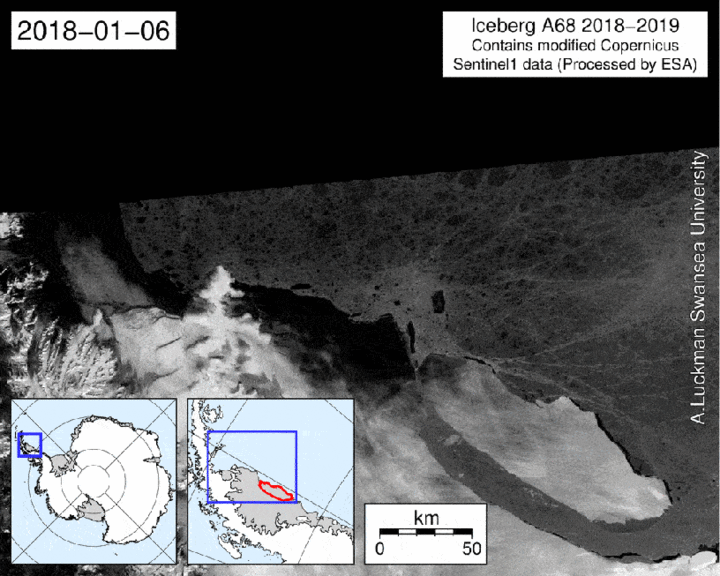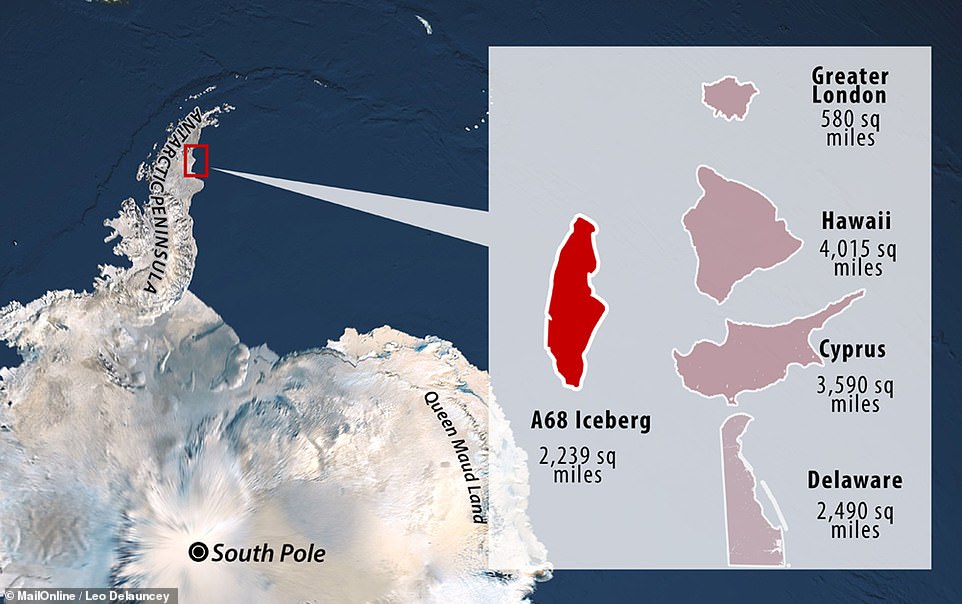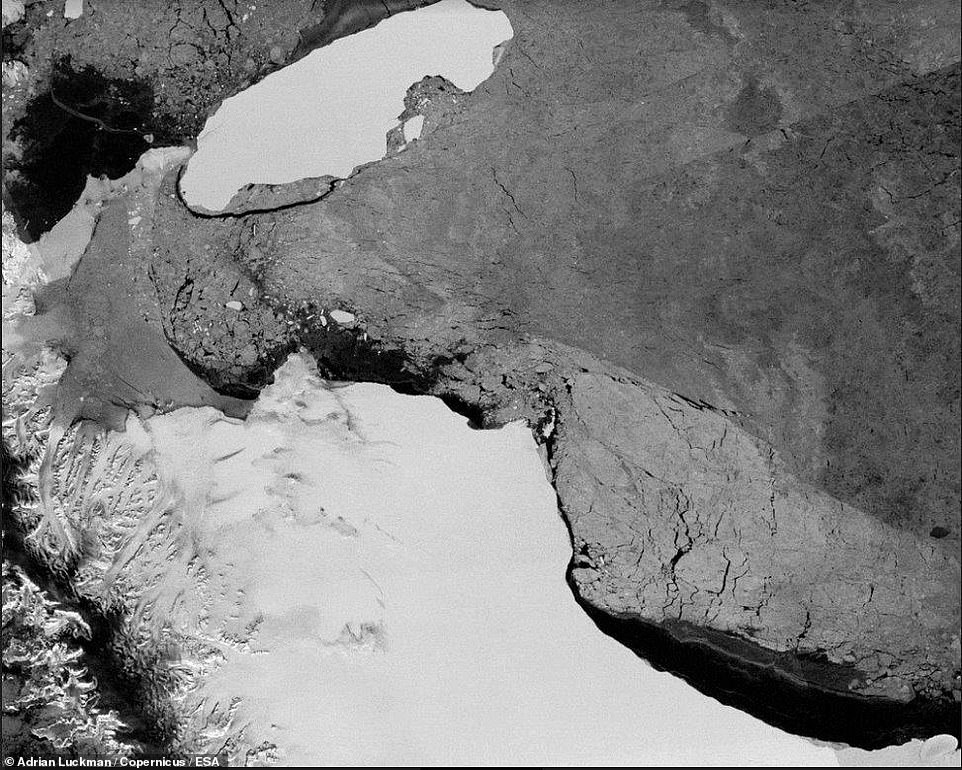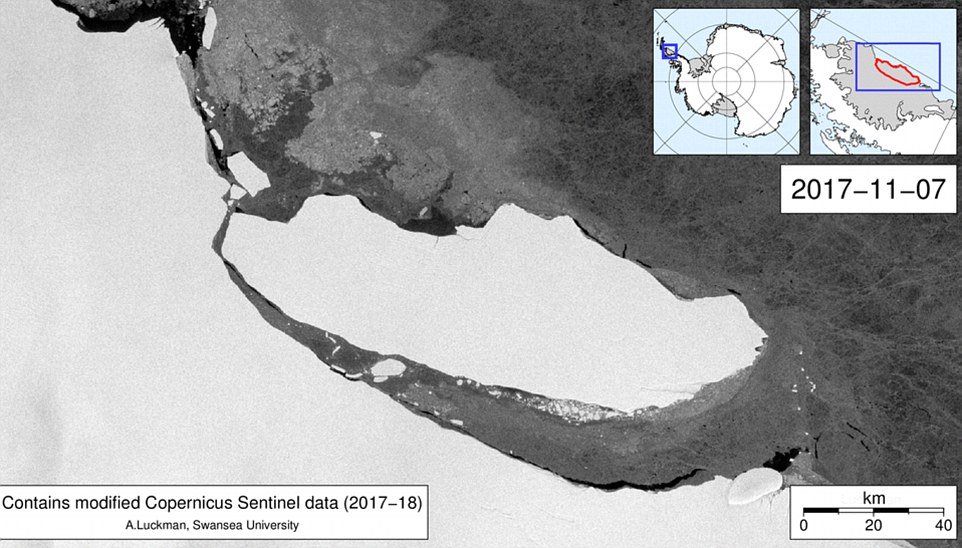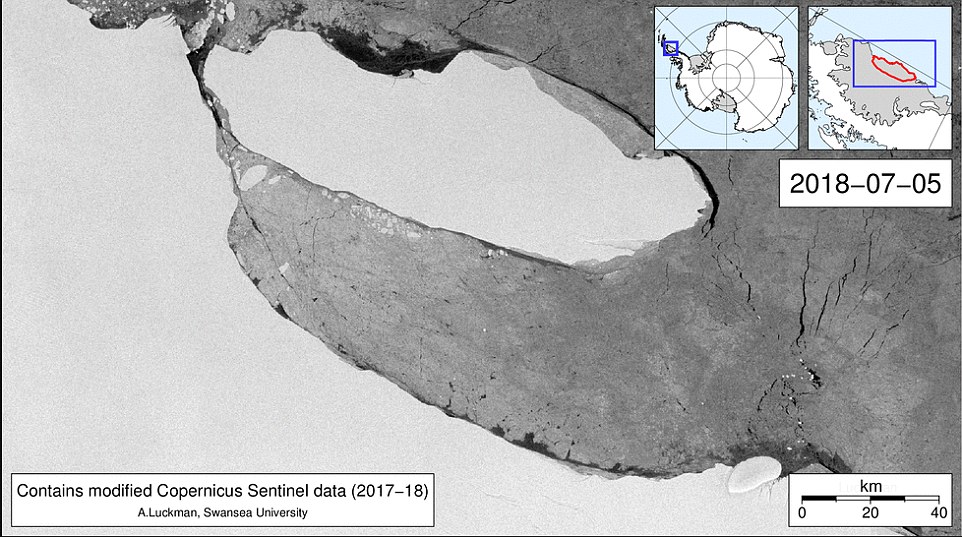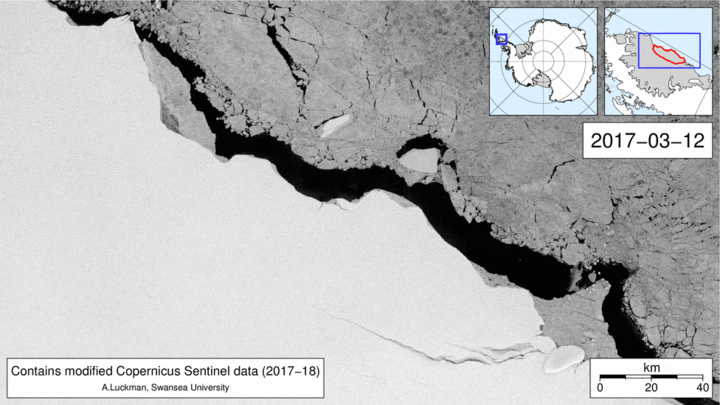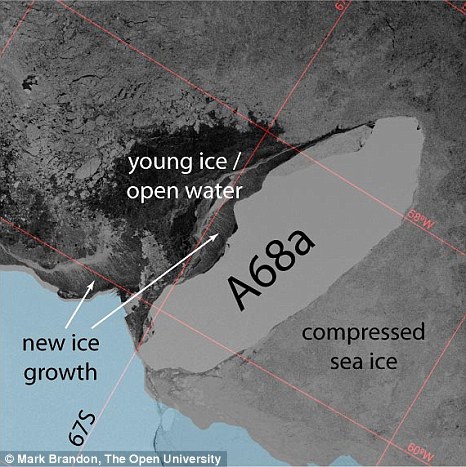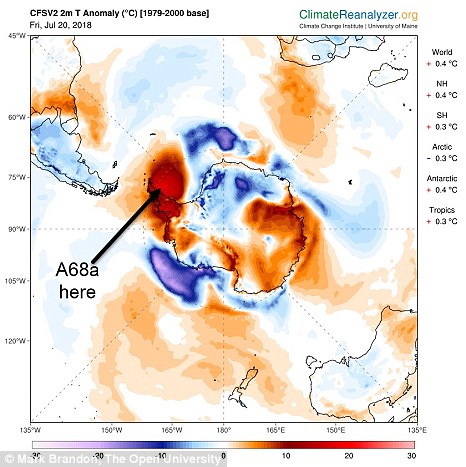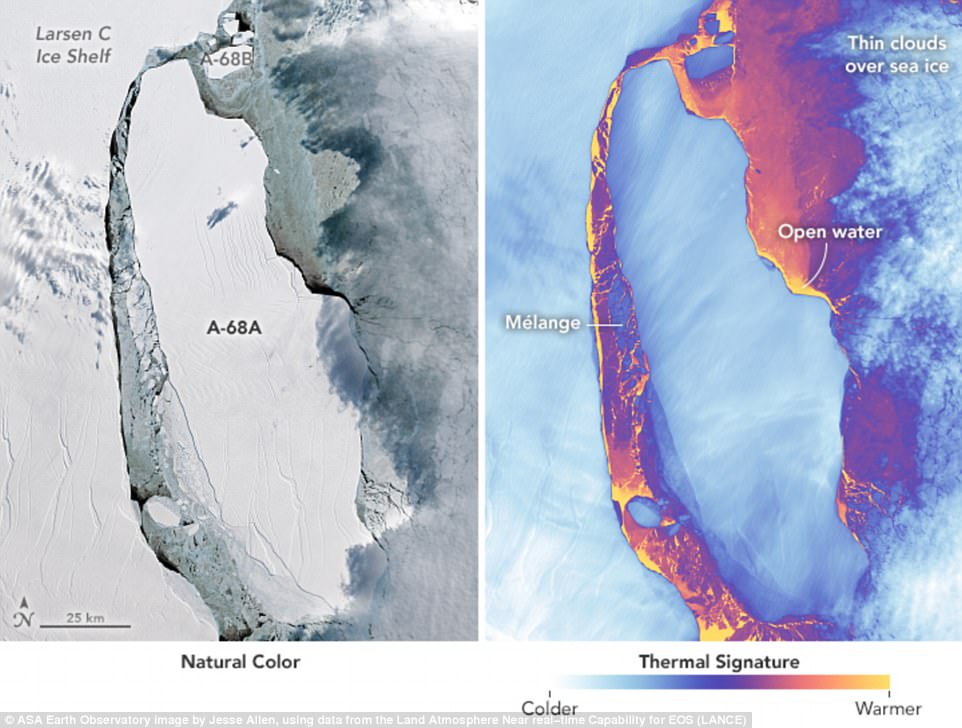كثيرا ما تنشأ الجبال الجليدية نتيجة للأنهار الجليدية، والتى يمكن أن تتحرك من مكانها لعدة عوامل، ولعل من بين ذلك واحد من أكبر الجبال الجليدية فى العالم، والذى يسمى A-68، والذى رصدت صور الأقمار الصناعية رحلته الحالية من القارة القطبية الجنوبية التي وصلت لأكثر من 155 ميلاً (250 كم) نحو جورجيا الجنوبية.
ووفقا لما ذكره موقع صحيفة “ديلى ميل” البريطانية، فإنه نظرًا لكون الجبل الجليدي قد انطلق من الجرف الجليدي في القارة القطبية الجنوبية (Larson C) قبل عامين، فإن الجبل الجليدي قد قام بالدوران بزاوية 270 درجة وانجرف على مسافة 155 ميلًا شمالًا، يحمله تيار المحيط.
وتبلغ مساحته 2239 ميلاً مربعًا، فهو يساوى أضعاف مساحة لندن، وحجمه ضعف بحيرة إيري، حيث تتم عملية إنشاء جليد من الجليد بشكل طبيعى، فتزود الأنهار الجليدية الداخلية الرفوف الجليدية الساحلية بجليد جديد، ويتم دفع الجليد الأقدم إلى البحر.
وتشير مجموعة من الأدلة إلى أن ارتفاع درجات حرارة الماء والهواء الناجم عن الاحتباس الحراري يؤدي إلى زعزعة الاستقرار على طول سواحل أنتاركتيكا وجرينلاند، مما يسرع من الذوبان
